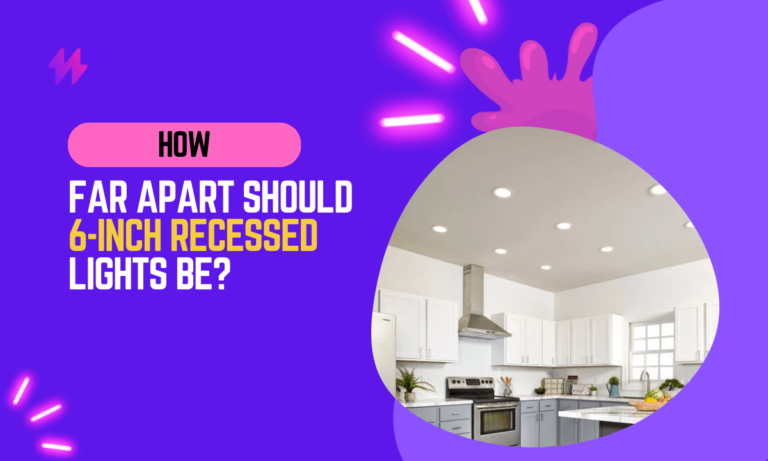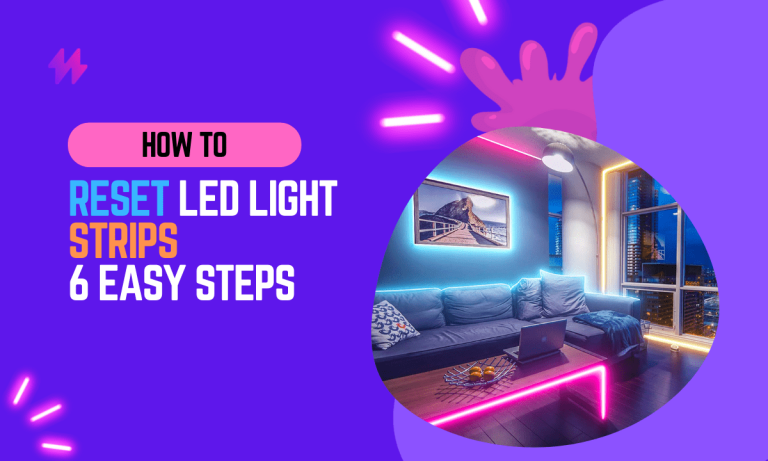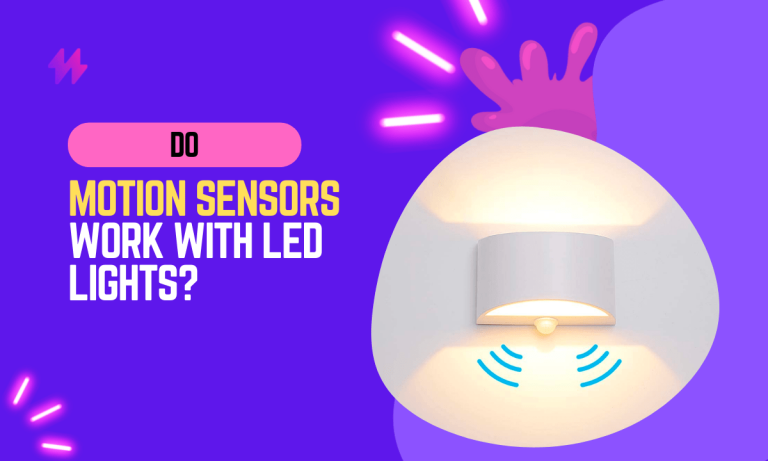What Color LED Light Helps You Sleep?
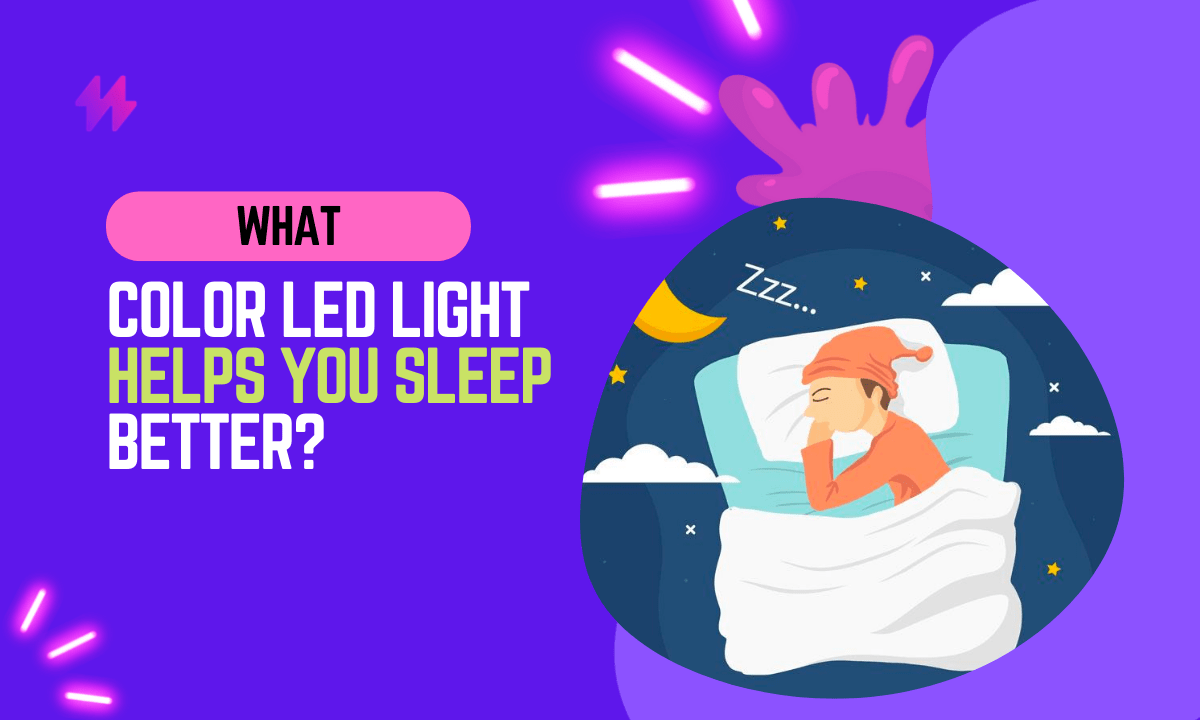
Getting a good night’s sleep is essential for our physical and mental health. However, many people struggle to fall asleep or stay asleep throughout the night. One possible solution to this problem is using LED lighting in your bedroom, it has been observed that different colors of light have other effects on our brains.
In this lighting guide, we will explore the different colors of LED lights and their effects on sleep, and discuss which color LED light is best for helping you sleep.
Incorporating calming light colors into your nighttime routine can significantly improve your sleep quality. Using warm amber color lights, like those made from modern light sources, creates a soothing environment that aids in regulating your circadian rhythm and promotes a healthier sleep cycle.
What Color LED Light Helps You Sleep: Understanding the Impact of Different LED Colors on Your Sleep
The color of the LED light in your bedroom can have a significant impact on your sleep patterns. Different colors of light can affect your body’s production of melatonin, a hormone that regulates your sleep-wake cycle.
Exposure to blue light in particular can suppress the production of melatonin, making it more difficult to fall asleep and stay asleep.
Choosing the right light bulbs for your bedroom can be essential for establishing healthy sleep patterns. Incorporating warm colors, such as amber light, can help create a cozy environment conducive to sleep, while avoiding harmful blue light is crucial for maintaining your circadian rhythm and preventing sleep deprivation.
Optimal LED Light Color for Enhancing Sleep Quality
Based on the available research and personal experience, the best LED light color for sleep is Red. Red light has been shown to have the least impact on melatonin production, making it the best choice for a bedroom. It can help to promote feelings of relaxation and comfort, and can also reduce eye strain.
Another way to assist you in sleeping better at night is by having no lights on. Blackout curtains are the best sleep solution.
The use of red light bulbs in the bedroom can significantly enhance sleepiness by minimizing interruptions to melatonin production. For those struggling with sleep disorders or frequent sleep inertia, using calming colors like amber or red light can profoundly benefit sleep-wake cycles and promote a good sleep environment.
Exploring Red Light’s Role in Melatonin Production for Improved Sleep
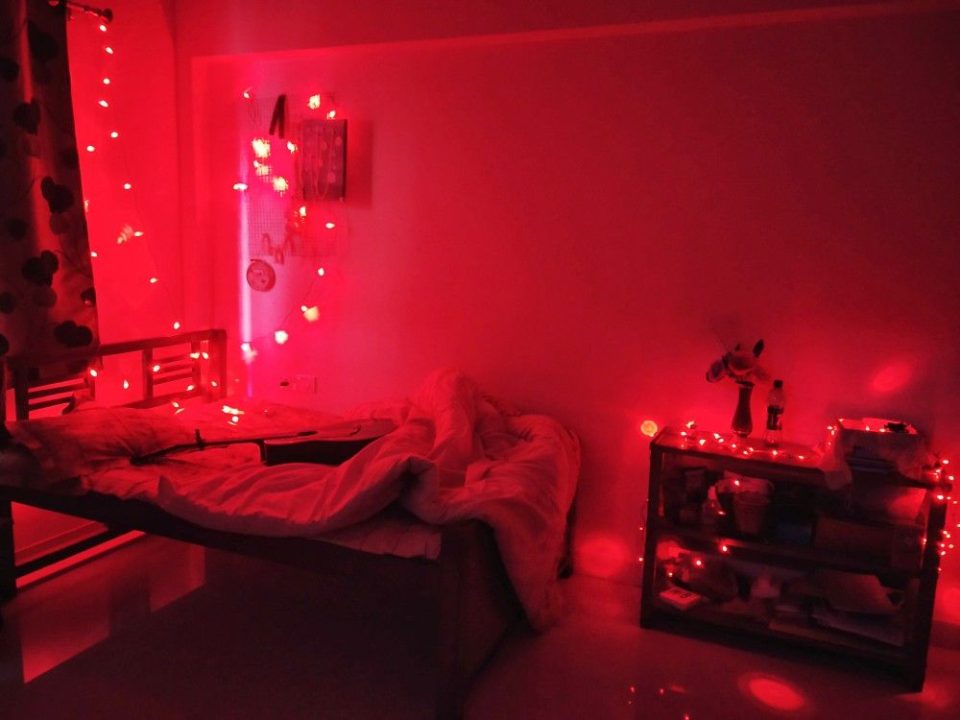
Red light has been shown to have the least impact on melatonin production, compared to other colors of light. Melatonin is a hormone that is produced by the pineal gland in the brain and helps to regulate your sleep-wake cycle. Exposure to blue light in particular can suppress the production of melatonin, making it more difficult to fall asleep and stay asleep.
Red light, on the other hand, has been shown to have a minimal effect on melatonin production. This makes it the best choice for a bedroom, as it can help to promote feelings of relaxation and comfort and can also reduce eye strain.
Choosing red-light options for your bedroom can enhance your overall well-being, making it an ideal choice to help you relax before sleep. Utilizing proper light-emitting diodes that emit low energy colors is essential for promoting a restorative sleep cycle, especially for those affected by circadian rhythm sleep disorders.
Red Light and Sleep Quality: How Different LED Light Colors Impact Your Rest
In addition to its effects on melatonin production, red light has also been shown to improve sleep quality. A study published in the Journal of Athletic Training found that athletes who slept in rooms with red light reported better sleep quality than those who slept in rooms with blue light. Another study published in the journal Chronobiology International found that red light exposure can improve sleep quality in older adults.
Research has consistently shown that using specific light wavelengths can promote a healthier sleep cycle. By incorporating relaxing light colors like warm pinks and ambers into your sleep environment or utilizing a red light lamp, you can effectively combat the effects of blue lights and enhance your overall sleep quality.
Red Light and Its Benefits for Sleep: Understanding the Impact on Sleep Quality and Melatonin Production
In addition to its effects on sleep, red light has also been shown to have other benefits. For example, red light therapy has been used to treat a variety of conditions, including skin conditions, joint pain, and seasonal affective disorder. Red light has also been shown to improve blood circulation and boost the immune system.
In addition to its sleep benefits, red light supports overall health by enhancing recovery and reducing inflammation. Utilizing night light colors that align with the light spectrum conducive to sleep can facilitate improved sleep routines and combat the adverse effects of artificial blue light, promoting a balanced sleep-wake rhythm.
Understanding Why Blue Light is the Most Detrimental Color for Sleep
Blue light is the worst color for sleeping, as it stimulates your brain. Blue light does not help you sleep and can actually keep you awake. If you need a nightlight in your bedroom, make sure to choose an LED red light bulb or dimmer yellow or orange light instead of a blue one.
To ensure a restful nighttime environment, avoiding cool colors like blue and embracing warm relaxing colors is essential. Leveraging tools such as blue light blocking glasses and red-light bulbs can significantly improve your sleep cycles and aid in maintaining a healthy sleep-wake rhythm.
Exploring the Impact of Pink Light on Sleep Quality
Pink light is a good choice for sleeping, as it has the same calming effects as red light. Pink light does not stimulate your brain and helps you to relax, which can lead to better sleep. If you want extra lighting in your bedroom after dark and Red light, opt for an LED pink light bulb instead of blue or white ones.
Incorporating pink light into your sleep environment can serve as an effective alternative to traditional light sources. This approach allows you to enjoy the benefits of calming light colors, which can help regulate your sleep-wake rhythm and provide sufficient brightness without the adverse effects associated with high energy colors.
Understanding Green Light and Its Impact on Sleep
Greenlight is also a good choice for sleeping, as it has calming properties similar to red and pink. Greenlight does not stimulate your brain and can help you relax before bedtime. If you need extra lighting in the bedroom at night, opt for an LED green lightbulb instead of a blue or white one.
In addition to green light, utilizing other light products such as amber light bulbs can further enhance your sleep-wake rhythm. Understanding what color LED light helps you sleep is key for creating an environment that promotes relaxation and supports healthy sleep patterns without the negative effects of blue and cool-toned colors.
Key Takeaways on How LED Light Colors Influence Your Sleep
By understanding the science of how colors affect our moods, we can make better decisions about which colors are best for us in specific situations. When it comes to getting a good night’s sleep, using LED lights with the right color spectrum can be key.
In conclusion, the influence of LED light color on sleep quality is a topic of considerable interest, given the increasing integration of LED lighting in residential settings. Among the spectrum of available LED colors, red light is most conducive to promoting sleep. Red light has the least power to shift circadian rhythm and suppress melatonin production, making it a favorable choice for evening lighting. This is because red light, unlike blue or white light, has a lower color temperature and does not stimulate the brain to remain alert, thus facilitating a natural transition to sleep. Implementing red LED lights in night lights or as part of a bedtime routine can help signal to the body that it is time to wind down, potentially making it easier to fall asleep and stay asleep throughout the night.
Additionally, while red is optimal for night-time use, other colors like warm amber or soft yellow also have minimal effects on sleep patterns compared to cooler tones like blue or green. These warmer colors mimic the hues of sunset, which naturally prepare the body for rest. For those interested in optimizing their sleep environment, incorporating these colors into bedroom lighting setups using dimmable LEDs can create a calm and restful atmosphere. Furthermore, modern LED technology often includes settings that can be adjusted for time of day, with options to automate the transition from energizing daylight to calming warm light as evening approaches. By thoughtfully choosing the right LED light color and incorporating it into their daily routine, individuals can enhance their sleep quality while also enjoying the aesthetic and energy-efficient benefits of LED lighting.
What Color LED Light Helps You Sleep | LED Color Spectrum and Sleep
The impact of color on sleep is rooted in the science of light wavelengths and their effect on our circadian rhythms. Understanding what color LED light helps you sleep involves recognizing that cool light encourages alertness while warm amber-spectrum light promotes relaxation. Bright lights, especially those emitting blue-green or violet light, can interfere with melatonin secretion, thus disrupting the timing of sleep. For a restful night, using red night lights or dimmer light is beneficial, as these colors have a calming effect and do not suppress sleepiness. Sleep lights with low color temperature create a nice warm relaxing atmosphere, ideal for preparing the body for sleep. Transitioning to these appropriate color night lights at bedtime can help sleep-deprived individuals and restless sleepers achieve a healthier sleep-wake rhythm. Emphasizing proper light exposure and selecting the right colored light bulbs, such as amber or red glow options, can significantly enhance the quality of sleep.
What Color LED Light Helps You Sleep | The Science Behind Light Wavelengths
Understanding the science behind light wavelengths is crucial for optimizing sleep quality. Research indicates that blue-green light emitted from common light bulbs can significantly disrupt the melatonin rhythm, a hormone vital for sleep. Exposure to cool-colored light, especially during evening hours, sends a strong sleep-wake signal to the brain, often leading to sleep inertia prevention. Sleep-deprived parents or individuals using bright lamps may find themselves battling bad sleep due to this effect. On the other hand, warm hues and light-hued bulbs, such as pure amber light or red light, create an ideal calming environment that promotes relaxation and encourages a transition to sleep.
The role of artificial light in our environment cannot be understated, especially for those dealing with sleep-wake rhythm disorders. Effective use of coloured light bulbs can facilitate healthy light exposure before bed. While candlelight provides a natural, dimly lit setting, adjusting to light conditions through the use of appropriate calming light, like amber book lights, can be beneficial. Light therapy works through specific wavelengths, and understanding which colors help us unwind is vital. For the best results, choosing free light options that avoid blue light exposure can make a considerable difference in inducing a sleepy state and improving overall sleep quality.
How Different Colors Affect Circadian Rhythms
Circadian rhythms are significantly influenced by the colors emitted from various light sources. Bright lights, particularly those found in fluorescent lights, promote alertness and cognitive function during the day. However, exposure to blue light waves, such as those from clock-blue light, can interfere with the body’s sleep-wake cycle, making it essential to consider what color LED light helps you sleep. Utilizing amber-wavelength light or red light, which suppresses the production of sleep-disrupting hormones, fosters a more conducive environment for rest. A free light bulb with these specific characteristics can help create a dark room atmosphere that encourages easy transitions into sleep.
Green light spectrum has also shown intriguing effects on circadian rhythms. Studies suggest that green light colors, particularly those within specific green light wavelengths, can have a calming effect and promote relaxation. Individuals who are color-blind may perceive these light colors differently, potentially affecting their sleep quality. Somnogenic light, such as purple light waves, may also offer benefits when timed appropriately, as proper brightness levels combined with the right color can enhance the sleep environment. Reading lamps that emit this light mimics natural patterns, offering enough light without disrupting the overall ambiance of a dark room, which is favored by sleep physicians for optimal rest.
Best Practices for Using LED Lights at Night
Selecting the right color light in your bedroom can significantly influence sleep quality. Understanding what color LED light helps you sleep is essential for creating a conducive nighttime environment. Research shows that red light suppresses melatonin less than blue or white lights, making it a preferred color for evening use. Bright lights promote alertness, while dim, warm light attenuates the stimulating effect of brighter tones. For optimal conditions, a room should be dark enough to signal to the brain that it is time for rest. Using a general-purpose bulb with noblue amber sleep features can help create a serene atmosphere that aligns with our natural circadian rhythms. By adjusting to the specific wavelengths that emit calming light, one may experience a more restful night and improve overall sleep health.
Effective Strategies for Bedroom Lighting
Creating an optimal bedroom lighting environment plays a critical role in achieving possible sleep quality. What color LED light helps you sleep best? Warmer color light tends to emit wavelengths that are less stimulating to the brain. These hues create a calming atmosphere that convinces the mind to relax. Light receptors in the eyes respond favorably to lower levels of blue light, which makes it essential to minimize exposure to bright, harsh lights in the evening. Keeping the room dark or utilizing dim, warm lights can enhance the effectiveness of sleep-inducing color light.
Implementing effective strategies also involves understanding the timing and intensity of light exposure. Utilizing softer, visual color visible in the warmer spectrum helps the brain associate lighting with nighttime. Bright or cool light can disrupt your body’s natural rhythms, making it harder to fall asleep. It is important to gradually dim the lights as bedtime approaches. This gentle transition can help signal to your body that it’s time to wind down, fostering a more conducive environment for sleep. Knowing what color LED light helps you sleep can significantly improve your nighttime routine.
Timing and Duration of LED Light Exposure
The timing of LED light exposure plays a crucial role in influencing sleep patterns. Exposure to blue light emitted by screens or bright white lights during the evening can interfere with the body’s natural circadian rhythms. As the day winds down, warmer hue color light helps us prepare for sleep by signaling to the brain that it is time to relax. Understanding what color LED light helps you sleep can guide individuals in selecting the right lighting for their nighttime environment.
Duration of exposure to specific color lights also matters. Spending extended periods under bright or cooler-toned lights at night convinces the brain to remain alert, negatively impacting sleep quality. Shorter bursts of softer, warmer color light can be beneficial right before bedtime. Adjusting both the timing and duration of light exposure allows for a more conducive environment for restful sleep, emphasizing the importance of intentional lighting choices in nightly routines.
The Role of Acclimatization to Different LED Colors
Acclimatization to different LED colors can significantly influence how well individuals sleep. The specific hue of light emits varying wavelengths, which can either promote relaxation or stimulate alertness. Understanding what color LED light helps you sleep is essential for creating an optimal sleep environment. For instance, warmer color light tends to have a calming effect, while cooler colors may interfere with the body’s natural circadian rhythms. As individuals adjust to new lighting environments, they may notice changes in their sleep patterns and overall well-being, emphasizing the importance of choosing the right color light for nighttime use.
Adjusting to New Lighting Environments
Changing your lighting environment can significantly influence your sleep quality. Understanding what color LED light helps you sleep is essential for creating a conducive atmosphere. Warm colors, like soft yellows and oranges, can promote relaxation and encourage the production of melatonin, the hormone responsible for sleep. Cooler colors, particularly blue light, have a stimulating effect that can disrupt your circadian rhythms, making it harder to fall asleep.
Transitioning to new lighting environments requires an adjustment period. Your body needs time to acclimate to different color light and its effects on your mood and sleep patterns. If you frequently change your lighting conditions, being mindful of the colors you use at night can help mitigate any adverse effects associated with those changes. By strategically selecting what color LED light helps you sleep, you can foster a more restful nighttime routine.
Importance of Transitioning Light Colors
Transitioning between different color lights can significantly influence how you rest at night. Understanding what color LED light helps you sleep is crucial for establishing a calming bedtime routine. Soft, warm colours tend to promote relaxation, while cooler hues can have a stimulating effect. The effect light has on your mood and sleep quality emphasizes the need for a gradual shift from bright, blue-toned lights to warmer shades as evening approaches.
Establishing a routine that incorporates these transitions can help your body prepare for sleep. Using a warm, amber light in the evening signals to your brain that it’s time to wind down. Knowing what color LED light helps you sleep aids in creating a sleep-conducive environment. This adjustment allows for a more seamless transition into sleep, minimizing the impact of artificial light on your circadian rhythms and overall well-being.

